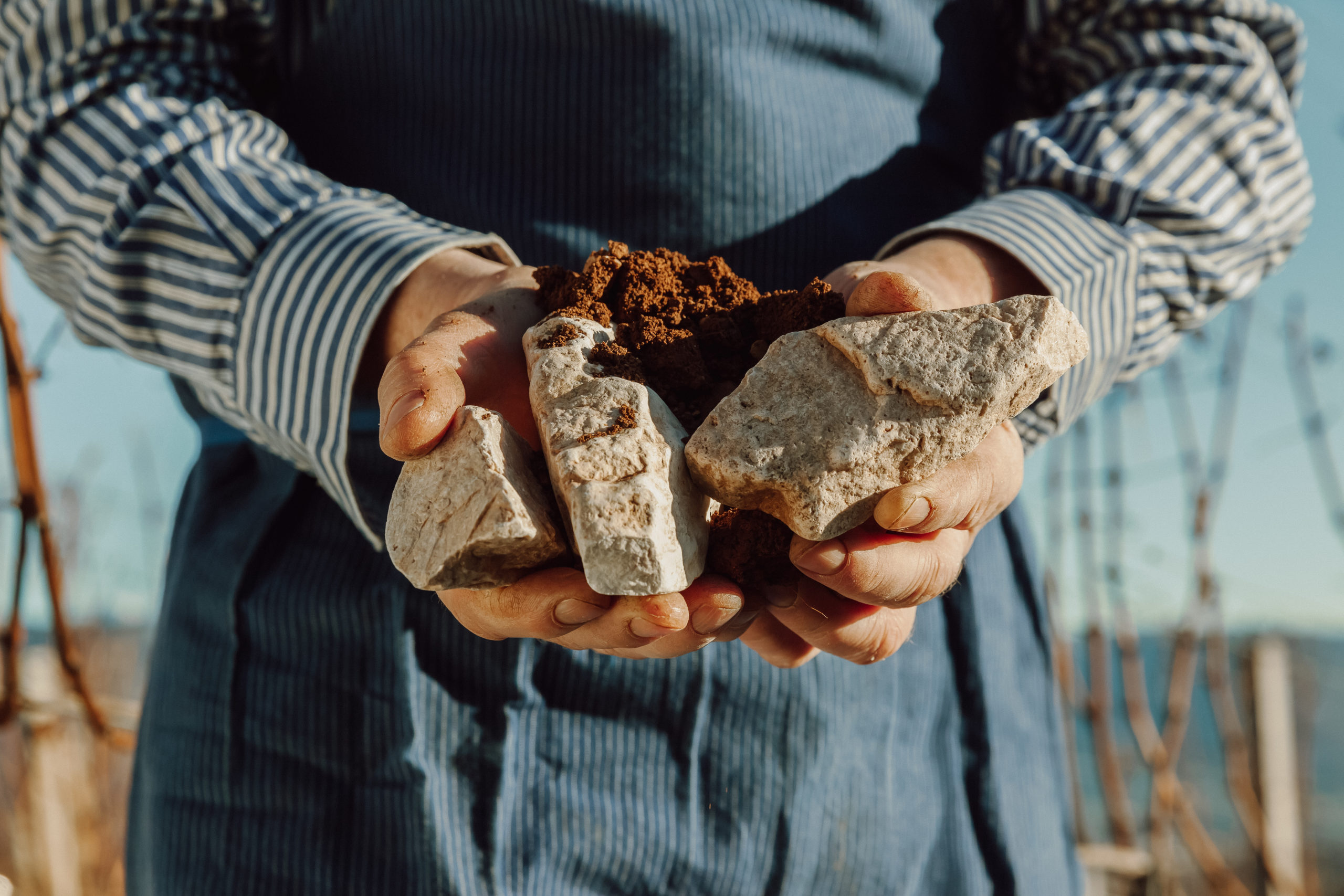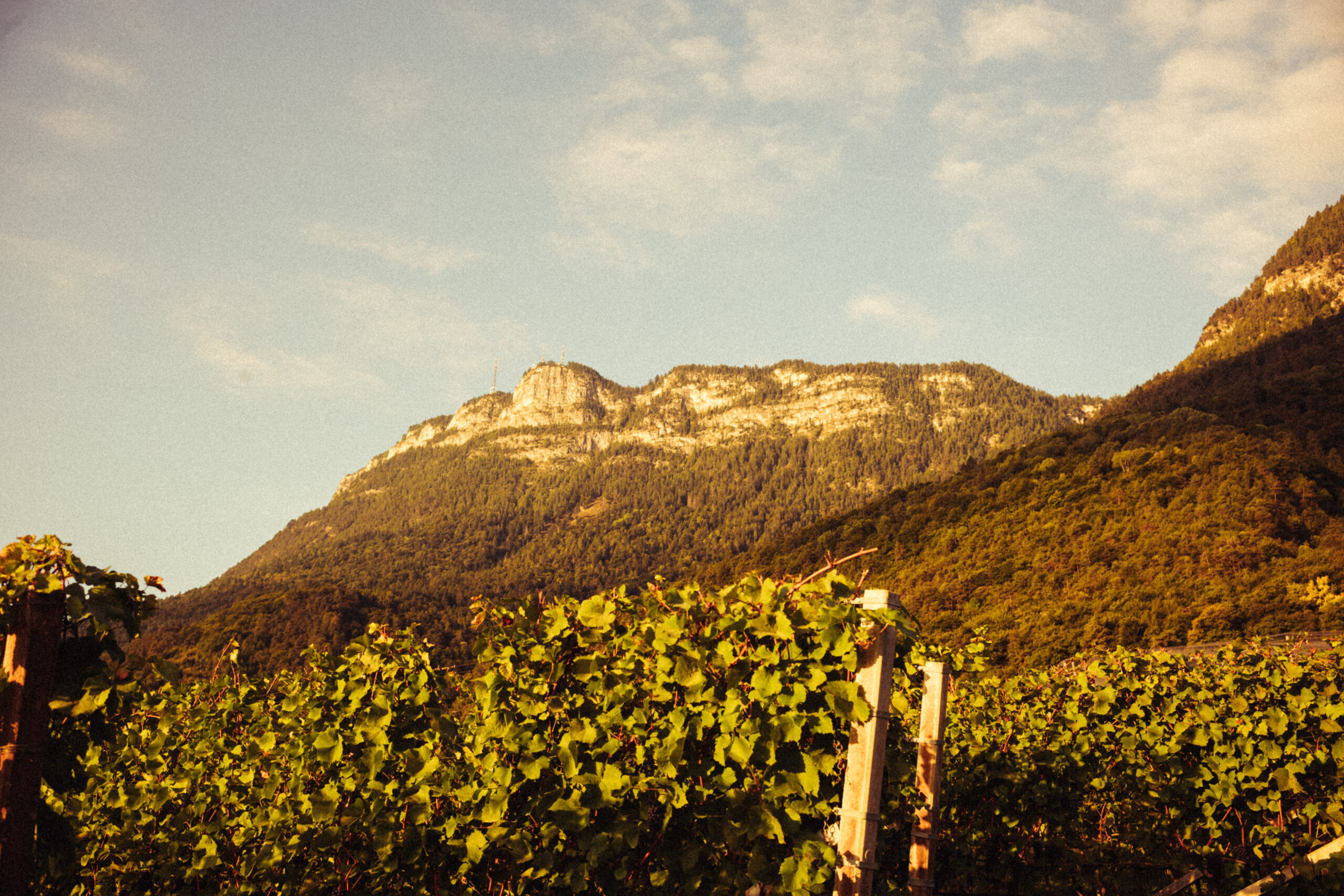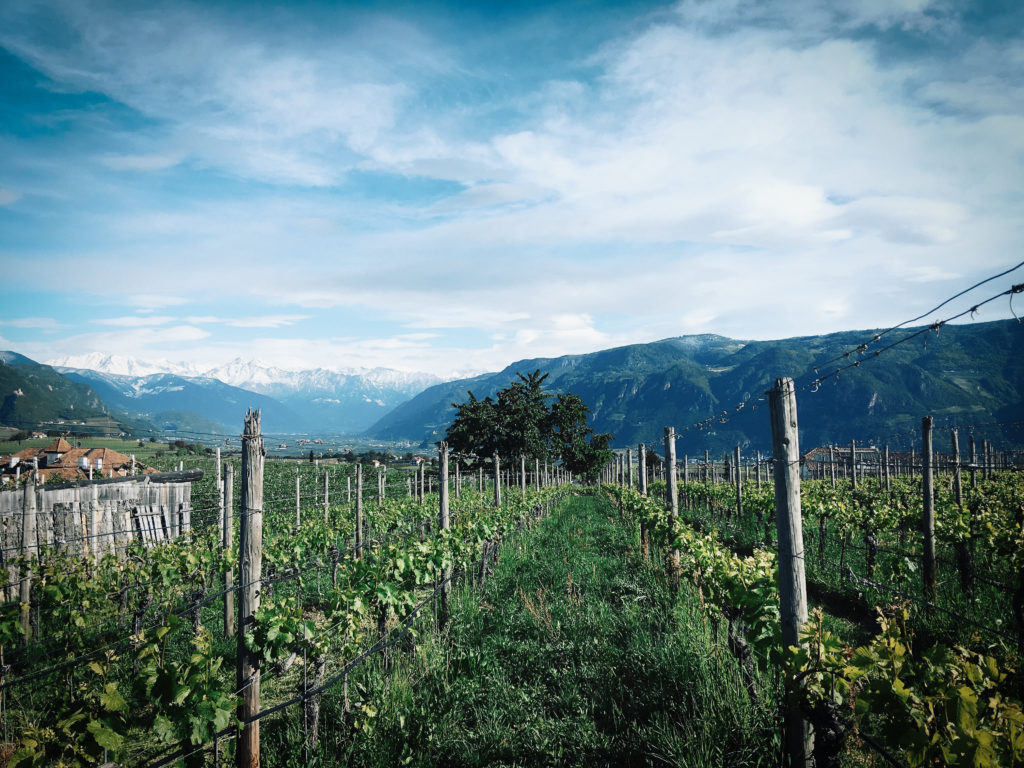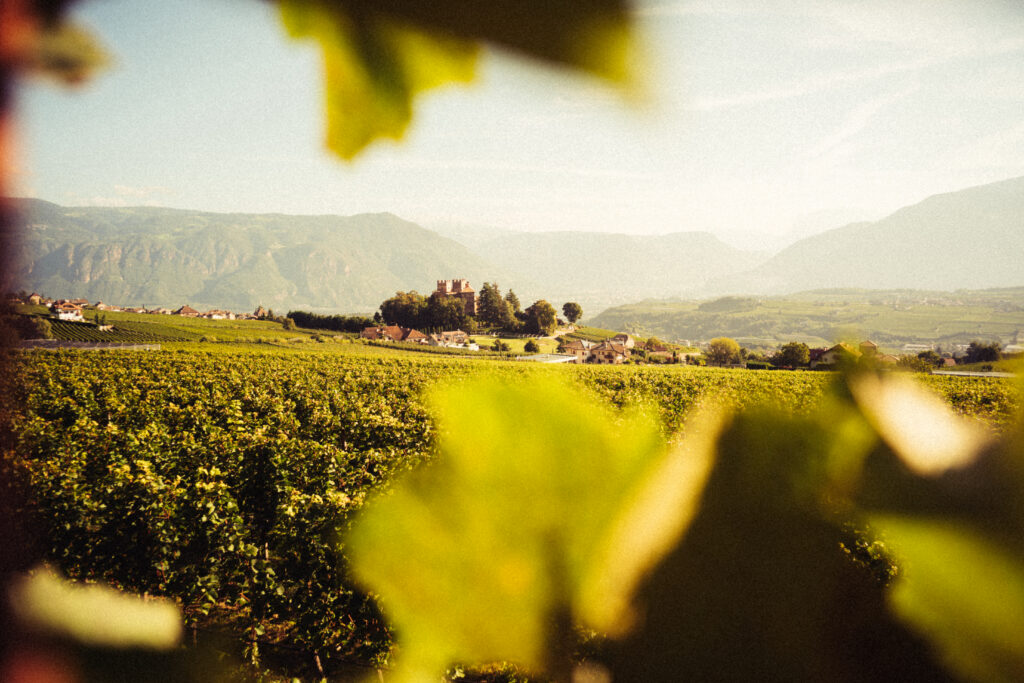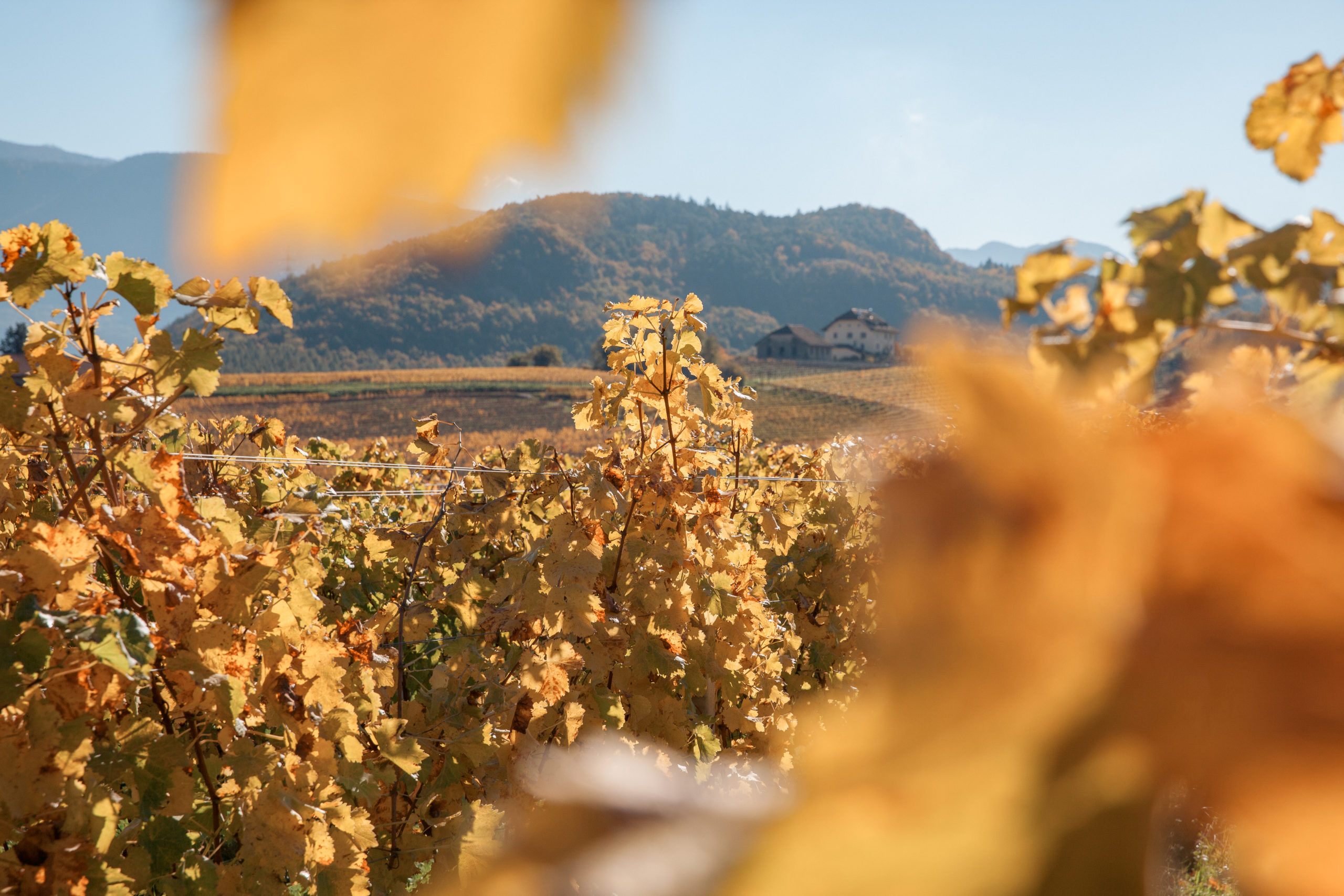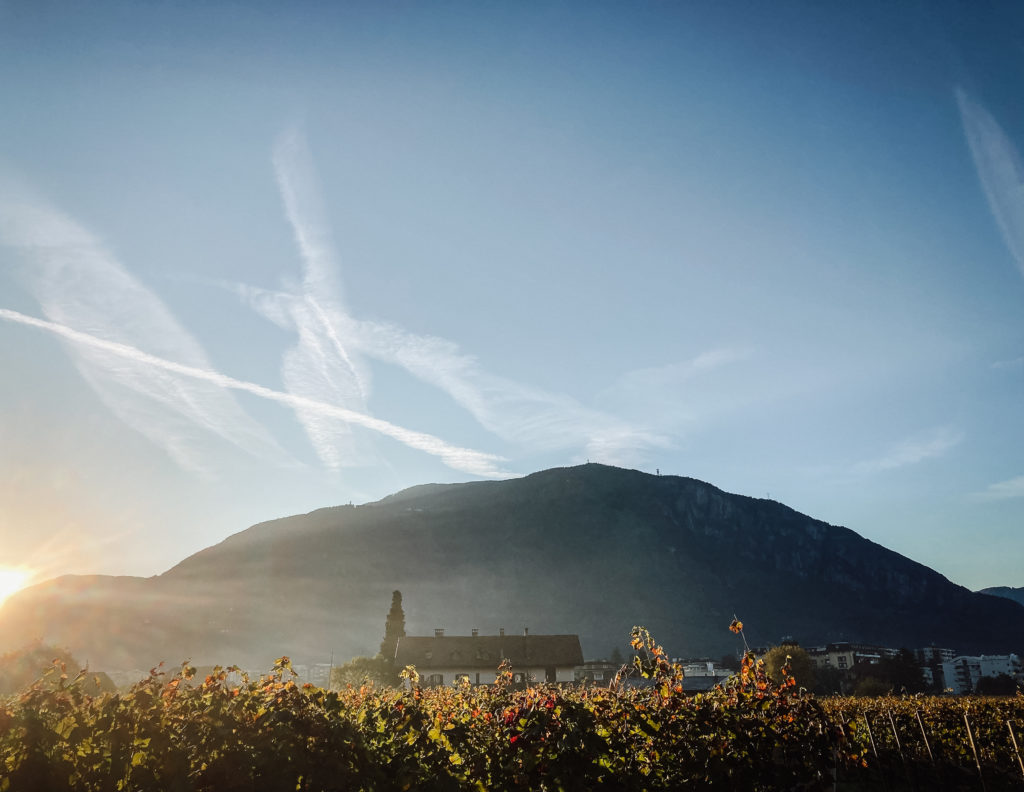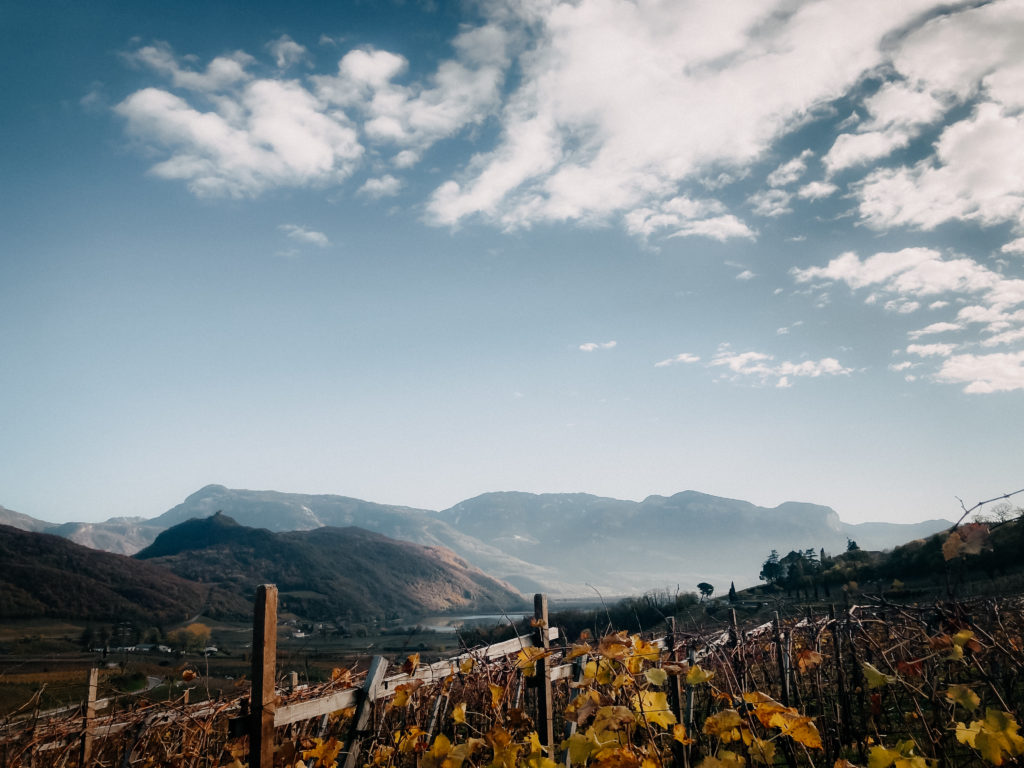Terroir has the strongest voice
Along the Alto Adige Wine Road, the Mediterranean meets the Alpine. Southerly winds in the altitudes of Girlan and cool downdrafts in the vineyards at the foot of the Mendola mountains. Over 2000 hours of sunlight a year, and yet significant fluctuations in temperatures between day and night.
In order to produce wines with strong character, we require both craftsmanship and suitable climate and soil.
We consider ourselves fortunate to work vineyards in different, historically recognised sites:
Girlan and Eppan Berg, Gries near Bolzano and on Lake Caldaro. Although these areas are geographically adjacent, they differ greatly in their inherent characteristics.
Among others, these contrasts are what gives our wines their own expression and liveliness.


